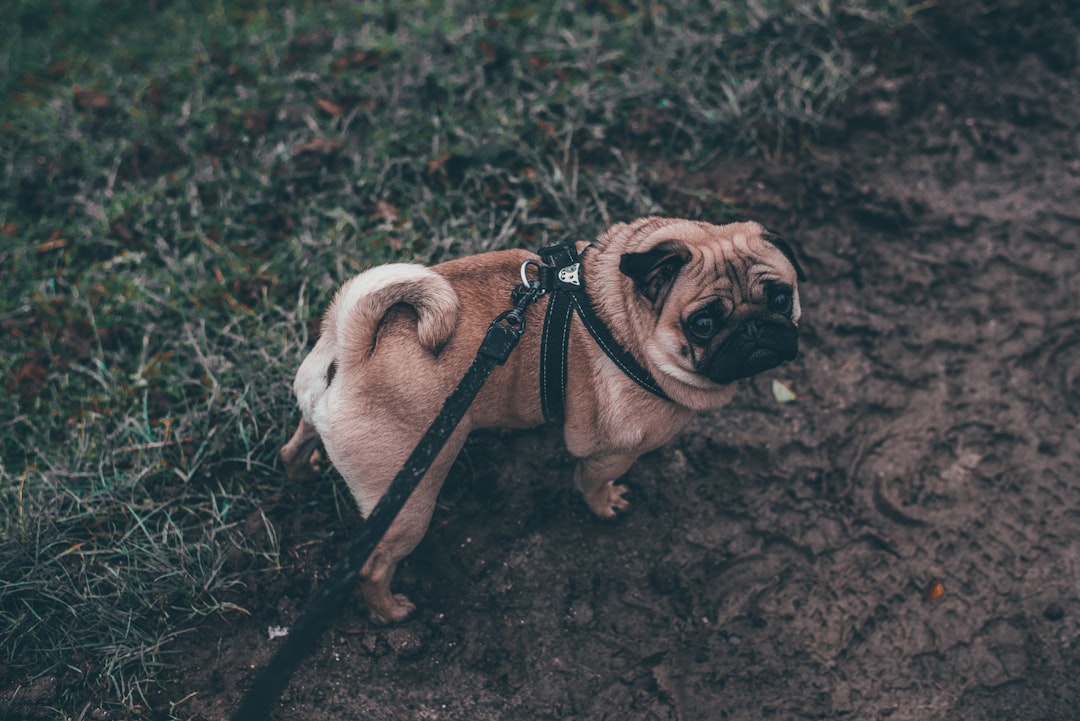Doberman ears are one of the most recognizable features of this loyal and intelligent breed. Understanding the anatomy and significance of these ears helps owners appreciate their unique appearance. While many choose to crop their Doberman ears for aesthetic reasons, there are both pros and cons to consider. Additionally, proper care and awareness of common ear health issues are essential for keeping your furry companion healthy. As the debate over ear cropping continues, it’s crucial to explore the legal and ethical aspects as well as the personal preference for natural versus cropped ears.
Understanding Doberman Ear Anatomy
Doberman ears are one of the most distinctive features of the breed, contributing both to its noble appearance and functional abilities. Understanding their anatomy helps in caring for and grooming these elegant dogs.
Key Characteristics of Doberman Ears:
- Shape: Doberman ears are typically triangular and long, giving the breed an alert and regal look.
- Position: Ears may naturally hang down or be cropped for a more upright stance. Cropping alters their appearance and can influence their health.
- Size: Proportionately large, Doberman ears enhance their sense of hearing, crucial for their roles as guard dogs.
- Skin: The inner ear is covered with a fine, delicate layer of skin, requiring proper care to avoid infection.
To maintain healthy Doberman ears, consider the following:
- Regular cleaning: Wipe the ears with a damp cloth to remove dirt and wax.
- Inspection: Check for redness, odor, or excessive wax buildup which might indicate an infection.
In summary, understanding Doberman ear anatomy is essential for both aesthetic appreciation and overall health, allowing owners to provide the best care for their dogs.

The Significance of Doberman Ears
Doberman ears hold a prominent place in the breed’s identity, serving both functional and aesthetic purposes. Understanding their significance can deepen your appreciation for this remarkable breed.
Communication: Doberman ears are expressive. They can convey various emotions, such as alertness, curiosity, or even aggression. This expressiveness helps in communicating with both humans and other dogs.
Hearing Ability: Dobermans possess a keen sense of hearing, and their ears play a crucial role in amplifying sounds. Properly shaped and positioned Doberman ears ensure that the dogs can detect high-frequency noises more efficiently.
Protection: The ears also serve a protective function. In their natural state, Doberman ears can shield the ear canal from dirt and debris, promoting ear health.
Breed Standard: Doberman ears enhance the breed’s distinct appearance, adhering to breed standards set by kennel clubs. This iconic look contributes to their reputation as elegant and powerful dogs.
In conclusion, the significance of Doberman ears extends beyond aesthetics; they play vital roles in communication, hearing, and protection, shaping the breed’s unique identity.
Ear Cropping: Pros and Cons
Ear cropping remains a contentious topic among Doberman enthusiasts. Understanding the pros and cons can help owners make informed decisions regarding their Doberman ears.
Pros:
- Aesthetic Appeal: Many owners believe cropped ears give Dobermans a more alert and regal appearance.
- Traditional Practice: Cropped ears are an established tradition that can enhance breed standards in certain dog shows.
- Reduced Ear Infections: Some argue that shorter ears can minimize the risk of ear infections due to better airflow.
Cons:
- Pain and Recovery: The procedure can be painful for puppies and typically requires a lengthy recovery process.
- Potential Complications: Cropping carries risks such as infections or improper healing, which can negatively affect the appearance of the Doberman ears.
- Ethical Concerns: Many animal advocates argue that cropping is unnecessary and may cause undue stress.
In conclusion, while there are appealing aspects to cropping, the associated risks and ethical implications require careful consideration for any Doberman owner.
Caring for Doberman Ears
Taking proper care of your Doberman ears is crucial for maintaining their health and overall well-being. Whether your Doberman has cropped or natural ears, consistent care helps prevent infections and keeps their ears looking sharp. Here are some essential tips:
Regular Cleaning:
- Use a veterinarian-recommended ear cleaner to gently wipe the outer ear.
- Avoid using cotton swabs inside the ear canal, as they can push dirt further in.
Check for Irritation:
- Look for signs of redness, swelling, or discharge, which may indicate an infection.
- If you notice any unusual odors, consult your vet promptly.
Monitor Ear Position:
- Cropped Doberman ears should stand erect but may occasionally droop.
- Natural ears should be clean and free from wax buildup.
Dry after Swimming:
- If your Doberman enjoys swimming, ensure their ears are dried thoroughly afterward to prevent moisture-related infections.
By following these care tips, you can maintain healthy Doberman ears, enabling your pet to express their unique personality. Remember, a clean and healthy ear contributes to your Doberman’s overall happiness and comfort!

Common Ear Health Issues in Dobermans
Doberman ears, whether cropped or natural, are susceptible to various health concerns. Being aware of these issues can help you maintain your dog’s ear health. Here are some common ear problems to watch for:
Ear Infections: This is a prevalent issue, often resulting from moisture, debris, or wax buildup. Signs include shaking their head, scratching, or a foul odor.
Hematomas: Blood accumulates between the ear cartilage and skin, causing swelling. This can occur due to excessive scratching or shaking.
Allergies: Dobermans can experience allergies that affect their ears, leading to redness, itching, and inflammation.
Ear Mites: These tiny parasites can infest the ear canal, causing itching, and irritation, especially in young dogs.
To ensure healthy Doberman ears, regularly check for unusual discharge or odor, and keep the ears clean and dry. If you notice any warning signs, consult your veterinarian promptly. Taking proactive steps can prevent minor issues from escalating into significant problems.
The Debate Over Ear Cropping
The practice of ear cropping in Dobermans remains controversial, sparking passionate discussions among dog owners and breeders alike. Here are key points to consider:
Pros of Ear Cropping
- Aesthetic Appeal: Many believe Doberman ears look more elegant and alert when cropped, enhancing the breed’s regal appearance.
- Historical Tradition: Ear cropping was originally intended to reduce the risk of ear injuries, particularly for working dogs.
Cons of Ear Cropping
- Pain and Trauma: The procedure can inflict considerable pain and distress on the dog. Responsible breeders emphasize that animals should not suffer for aesthetic reasons.
- Health Risks: Complications such as infections or poor healing can arise, leading to ongoing health issues.
Making the Choice
Determining whether or not to crop Doberman ears depends on individual values regarding aesthetics, health, and ethics.
While some embrace the cropped look, others prefer the natural floppy ears, valuing the dog’s comfort over tradition. Ultimately, both choices reflect the owner’s care and understanding of their Doberman’s needs.
Natural vs. Cropped Ears: Aesthetic Considerations
When it comes to Doberman ears, aesthetics play a significant role in owners’ preferences. Here’s a breakdown of the differences between natural and cropped ears:
Natural Ears
- Appearance: Floppy, long, and expressive.
- Personality: Often seen as softer, enhancing the dog’s approachable demeanor.
- Functionality: Excellent for hearing; the natural structure can aid in sound localization.
Cropped Ears
- Appearance: Sharp, erect, and more defined.
- Personality: Often associated with a more assertive and protective look, enhancing the breed’s guarding reputation.
- Functionality: Potentially can reduce certain ear health issues but may require meticulous aftercare.
Comparison Summary
| Feature | Natural Ears | Cropped Ears |
|---|---|---|
| Aesthetic | Softer appearance | More intimidating |
| Maintenance | Lower maintenance | Higher maintenance |
| Health Risks | Risk of ear infections | Risk of complications from cropping |
Ultimately, the choice between natural and cropped Doberman ears reflects individual aesthetic preferences and the values of each owner regarding the breed’s appearance and care.

Legal and Ethical Aspects of Ear Cropping
The practice of ear cropping in Dobermans raises significant legal and ethical questions. In many countries, this cosmetic procedure faces legal restrictions or outright bans due to animal welfare concerns. Here are some key points to consider:
Legality:
- In the United States, laws vary by state. Some states allow ear cropping, while others have imposed strict regulations or bans.
- Meanwhile, countries like the UK and Australia have prohibited the procedure entirely.
Ethical Considerations:
- Advocates for ear cropping argue that it enhances the breed’s appearance and may have historical significance. However, many animal rights organizations view it as unnecessary mutilation.
- The American Veterinary Medical Association (AVMA) opposes ear cropping for aesthetic reasons, emphasizing the importance of welfare over appearance.
In summary, the discussion around Doberman ears, particularly concerning cropping, reflects broader societal values about animal treatment. Understanding the legal and ethical landscape can help prospective owners make informed choices.
Frequently Asked Questions
Why do Dobermans have cropped ears?
Dobermans are often seen with cropped ears, a practice that dates back to the breed’s early days when it was thought to improve their alertness and reduce the risk of ear infections. Cropping is done for aesthetic reasons and is sometimes viewed as a breed standard. However, it’s important to note that ear cropping is controversial and is considered inhumane by many veterinary professionals and animal rights groups. Pet owners should carefully consider the implications and ethical aspects before opting for this surgical procedure.
How can I take care of my Doberman’s ears?
Taking care of your Doberman’s ears is crucial, especially if they are cropped. Regular cleaning with a veterinarian-recommended solution helps prevent infections. You should also check for signs of irritation or excess wax buildup. If your Doberman has floppy ears, be vigilant about trapping moisture and dirt, which can lead to yeast infections. Additionally, regular veterinary check-ups will ensure that your dog’s ears remain healthy and any emerging issues are addressed promptly.
At what age should Doberman ears be cropped?
Doberman ears are typically cropped between 8 to 12 weeks of age. This timing allows the puppy to heal quickly and reduces the pain associated with the procedure. Cropping at a younger age also helps in setting the cartilage, giving the ears a desired shape as they mature. However, due to the controversial nature of the procedure, it’s strongly advised to discuss with a qualified veterinarian or professional breeder about the ethical considerations and the best practices surrounding ear cropping for Dobermans.
What are the natural ear shapes of Dobermans?
Naturally, Dobermans have long, floppy ears. This characteristic offers them a unique appearance, but many owners choose to crop the ears for a more traditional look. However, regardless of whether they are cropped or kept natural, Dobermans’ ears are an essential part of their sensory abilities, helping them to detect sounds and communicate effectively. Owners should embrace their Doberman’s natural ear shape by addressing any necessary grooming and care that supports ear health.


